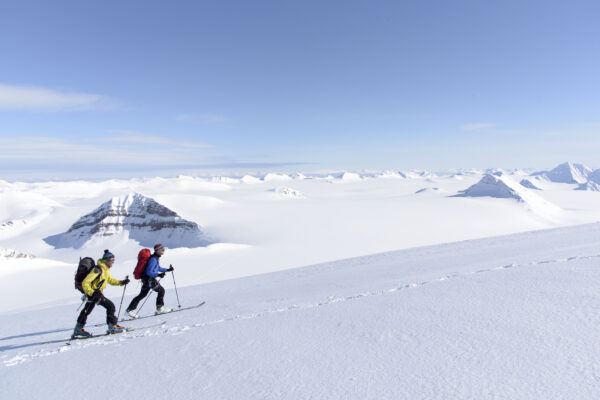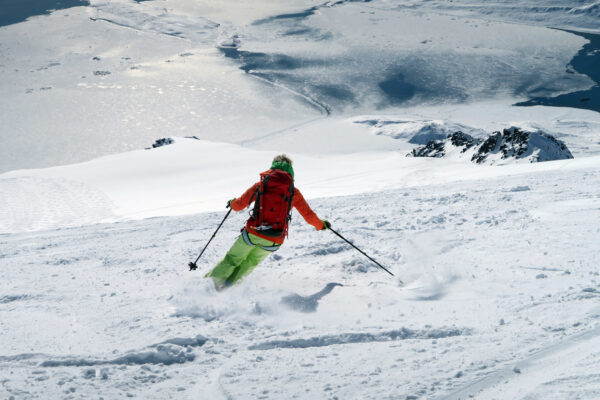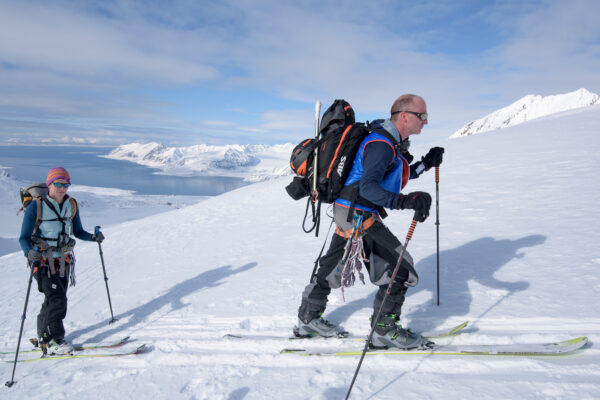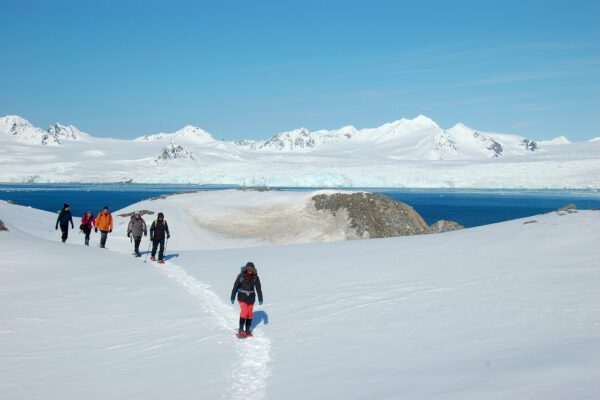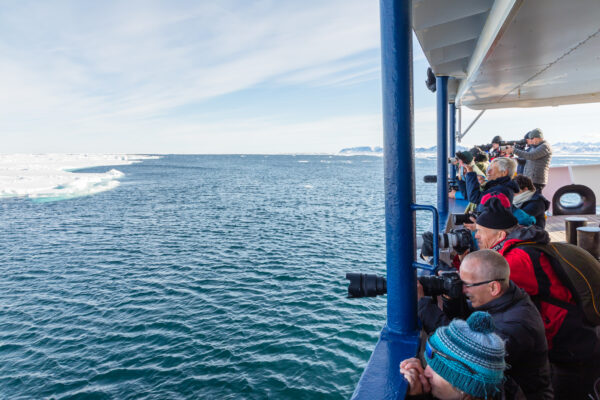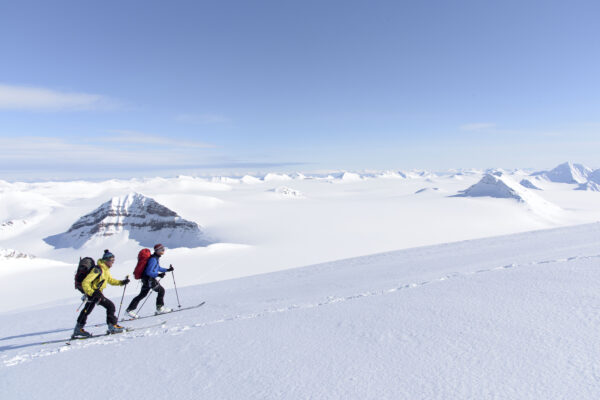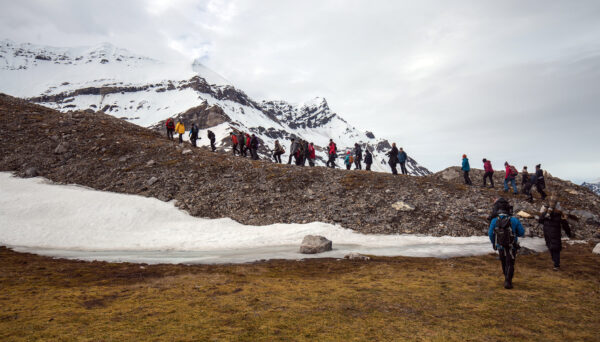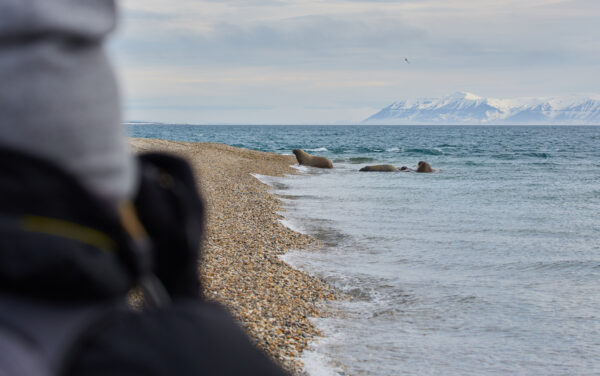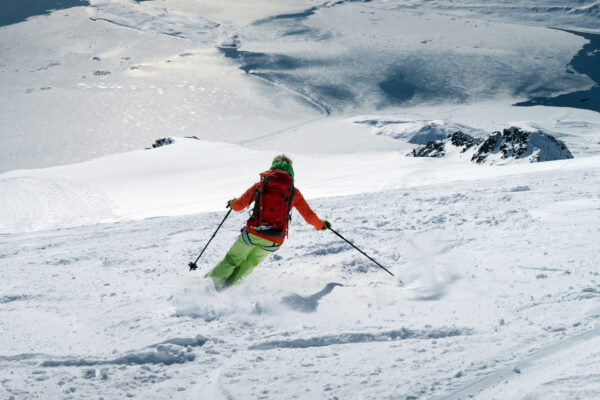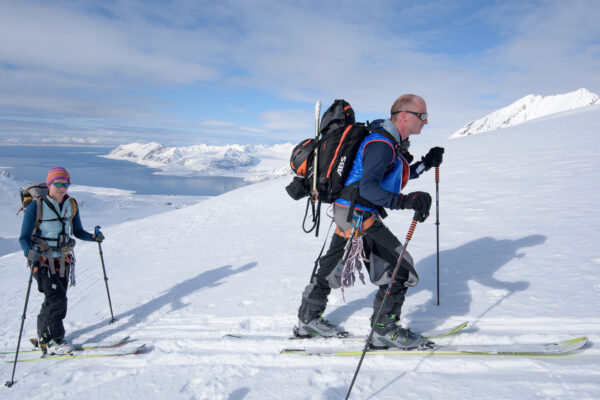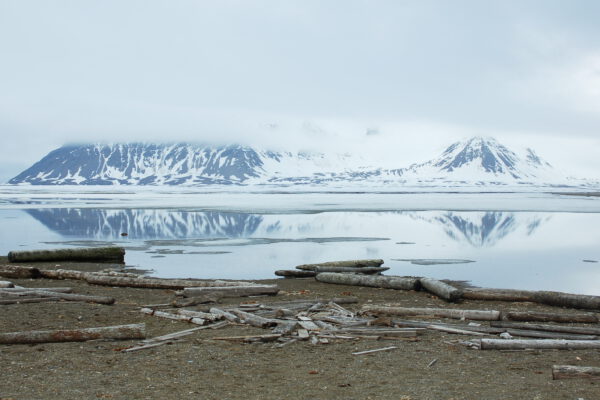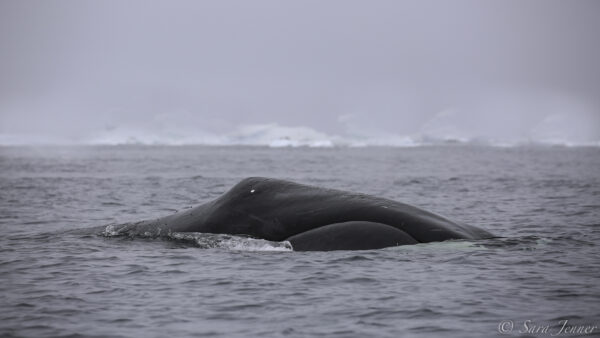Arctic FAQ
Frequently Asked Questions
Our team has compiled our Arctic FAQ to answer the most frequently asked Arctic travel questions! Don’t see what you’re looking for? Reach out to the Polar Holidays team for more information!
What would be the longest delay for medical attention during a trip to the Arctic?
In Svalbard and West Greenland we are generally within helicopter reach and a medevac is usually not more than some hours away if we have a serious emergency. That said, we do have clinics on some of our vessels. If this is an important feature for you, please contact us to discuss your options. In East Greenland there are only limited aerial med-evac possibilities and an evacuation via a remote airfield or to the hospital in Ittoqqortoormiit, Scoresbysund, may take up to 1-3 days depending on location, the medical emergency, and weather (flight options or ship based evacuation). All scenarios are highly weather dependent and the weather is variable.
It is therefore obligatory to acquire a travel insurance that also includes coverage for (medical) evacuation/repatriation costs by helicopter, plane or ship. After the booking process you will be asked to provide us with details of the acquired insurance policy.
If you are in poor health or in doubt, please consult your physician for a check-up that you are healthy enough to travel to such remote places with limited to no medical facilities. You can also contact us with any general health questions, we have provided travel for a large number of guests with a variance of ailments that had no issues onboard.
On our motor vessels we have a qualified physician onboard on all trips. The clinic onboard our motor vessels is merely suited for first aid medical care and small emergencies. Aboard our sailing vessels we have no onboard medical facility or physician available.
What is the time in the Arctic?
The time zone in the Arctic is GMT +1 on Svalbard trips is CET. East Greenland trips switch time zones mid-trip to fit Iceland time (GMT), West Greenland trips stays at GMT -2.
When may I board the ship?
Embarkation usually occurs on the second day of the expedition itinerary, about 4 PM (16:00), local time and you may arrive any time on Day 1. The exception is expeditions that begin in Longyearbyen, Spitsbergen, Svalbard. These embarkations are on the first day of the itinerary, please arrive no later than 2 PM (14:00).
Wearing the right clothes is essential, weather is definitely variable. You may need to purchase additional outdoor clothing, gloves, etc.
Gratuities or tips are always at your discretion. We recommend that you budget $10 to $15 per person per day, if you are pleased with the service on board. Gratuities are collected anonymously at the end of each voyage. They are distributed among staff and crew. Payment can be made in cash or charged to your shipboard account, whichever is more convenient.
It is a condition of booking any voyage that you and all members of your party have comprehensive travel insurance coverage, with a minimum of $50,000 of emergency medical coverage.
Please note that we try to provide a range of activity levels to meet the needs of our guests when they go ashore, not everyone has to hike!
It is therefore obligatory to acquire a travel insurance that also includes coverage for (medical) evacuation/repatriation costs by helicopter, plane or ship. After the booking process you will be asked to provide us with details of the acquired insurance policy.
If you are in poor health or in doubt, please consult your physician for a check-up that you are healthy enough to travel to such remote places with limited to no medical facilities. You can also contact us with any general health questions, we have provided travel for a large number of guests with a variance of ailments that had no issues onboard.
On our motor vessels we have a qualified physician onboard on all trips. The clinic onboard our motor vessels is merely suited for first aid medical care and small emergencies. Aboard our sailing vessels we have no onboard medical facility or physician available.
When is disembarkation?
Disembarkation will start at about breakfast time on the final day of your itinerary, we suggest later flights (past noon) to ensure you will make your flight. Group transfer from the ship to the airport is offered. Everyone will also have to go through a Customs Inspection.
What is the food like aboard the ship?
We pride ourselves on the meals we serve aboard our ships. Our chefs are internationally trained (and we don’t mean Canada!). And our service style is too! The menu changes every day. Breakfast is buffet style. Lunch often features a buffet. Dinner is plated service, with the choice of 3 main dishes. A vegetarian choice is always offered as well. The desserts are decadent. Tea, with pastries or cookies, is provided about 16:00 (4 PM) every day. Pastries arrive fresh and warm from the oven at about 06:00 (6 AM). You will not starve while aboard your cruise!
How risky is travel to the Arctic?
There is risk involved in traveling in any region where extreme conditions are possible, like that experienced in the Arctic. Weather, ice and natural phenomena, such as volcanic eruptions, can cause problems on shore and on the ship. We do everything possible to mitigate potential risk. Our ships are purpose-built for the polar regions. They are manned with experienced personnel. They are equipped with GPS, radar and other equipment essential for polar travel, and mandated by law. Our members are polar specialists. Our Standard Operating Procedures make safety paramount. Though we have not eliminated every possible risk, some of the adventure is due to the risk of these locations. This is not your average vacation to Florida.
What should I take into account when travelling to the Arctic with regard to protecting the environment?
Regeneration of the ground and vegetation is very slow so please be careful with your steps and do not cause unneeded damage. Do not take specimens from plants. Do not pick flowers.
Avoid disturbing or feeding the wildlife. Be aware of your activities and whether they are resulting in a change of the animals’ behavior. Be aware that Rabies does occur on Spitsbergen, particularly in Arctic Foxes. Be careful when moving in areas where birds are nesting. If birds are disturbed and leave their nests, the uncovered eggs cool quickly and are easy prey for gulls and foxes. If you have any questions, please contact us or the guides.
Avoid herding or alarming geese and ducks. Be kind to all animals and please consider any action that may disturb the ecosystem.
On several locations on the islands, cultural monuments and items such as burial sites, blubber ovens, crosses, hunting tools, etc. are regularly encountered. Such cultural monuments are generally protected by law. It is unlawful to destroy, alter, or remove such monuments and items from the place where they are found. Do not take any souvenirs, including whale or seal bones you may encounter, live or dead animals (obviously), rocks, fossils, plants, or other organic material. Please be aware you will have to go through Customs Inspection.
Is there pollution in the Arctic?
The Arctic region is relatively clean and left untouched by pollution. Due to its position amongst several developed nations, it is considered a fallout region for long-range transport pollutants that can accumulate to a density similar to a densely populated urban area. This accumulation appears as an Arctic haze. There is also an accumulation of polychlorinated biphenyls in the Arctic wildlife and people.
Is there a similar protection of the Arctic like that of the Antarctic?
Unfortunately, this is still in progress. In 2012, the Rio Earth Summit began a campaign to protect and preserve the Arctic. The initial focus of the campaign has been to prohibit oil drilling and unsustainable fishing.
Has climate change affected the Arctic?
Global warming, or climate change, has caused a loss of sea ice due to increasing temperatures in the Arctic. This has been evidenced further by the melting of the Greenland ice sheet, an ice sheet that covers 80% of Greenland. The melting of sea ice has prompted fears of methane (a greenhouse gas) release furthering the issue of climate change. Since the Arctic landscape is so delicately affected by global warming, it is typically used as the leading indicator of climate change.
This more rapid rise in the Arctic, as compared to the rest of the planet, has prompted concern that sea levels may rise substantially. The complete loss of sea ice is predicted for the year 2100, but as early as 2040. As mentioned above, the melting of the Greenland ice sheet and ice caps within the Arctic region, increases the amount of greenhouse gases released into the atmosphere leading to increased climate change world-wide.
The melting of ice in the area of the Northwest passage may increase the amount of shipping through the area, which may also increase the pollution within the Arctic region.
What checks should I undertake before going to the Arctic?
Ensure that the footwear you intend to take has been scrubbed clean and all soil and seeds removed. We will provide boots on our cruise so it’s not necessary to buy new boots.
Check all of your clothing for soil, seeds and insects, especially cuffs, pockets, hoods and all Velcro. Nothing foreign should be left or taken at any point.
Check that any equipment and luggage you plan to bring is clean and free of soil and seeds. This includes walking sticks, ski poles and tripods for cameras. Non-native species can become invasive and ruin these preserved ecosystems.
Why is the Arctic called the Arctic?
The name comes from the Greek arktikos meaning “near the Bear, northern” and further from arktos “bear.” This name is likely a reference to either the constellation Ursa Major (often in the Northern sky) or Ursa Minor (which contains the North star Polaris).
Where is the Arctic? Which countries are part of the Arctic?
The boundaries for the Arctic can be considered at (66° 33’N, the Arctic Circle), which is the region of the “midnight sun” and polar night (where night lasts for more than 24 hours). Another boundary used to define the Arctic, uses the average temperature for the month of July, where the temperature is less than 10 °C (50 °F). The northernmost treeline follows this approximate boundary.
There are eight countries that are encompassed within the Arctic and Arctic Circle. These include: Canada, Denmark, Greenland, Iceland, Norway, Finland, Sweden, Russia, and the USA. These countries are also part of the part of the Arctic Council, a high-level council that works to represent the indigenous people living within the Arctic.
Check all of your clothing for soil, seeds and insects, especially cuffs, pockets, hoods and all Velcro. Nothing foreign should be left or taken at any point.
Check that any equipment and luggage you plan to bring is clean and free of soil and seeds. This includes walking sticks, ski poles and tripods for cameras. Non-native species can become invasive and ruin these preserved ecosystems.
Does any one nation own the North Pole or the Arctic Circle?
There is not a single nation that owns the North Pole, nor the Arctic ocean that surrounds the area of the North Pole. Seven of the nations mentioned above are able to claim up to 200 nautical miles from their shores expanding into the Arctic Ocean (Canada, Denmark, Greenland, Iceland, Norway, Russia and the USA). Finland and Sweden do not have similar access to the Arctic Ocean.
How is the Arctic divided?
The Arctic can be looked at in four different regions. These areas include the Arctic Basin, the Canadian Arctic Archipelago, the entire island of Greenland, and the Arctic waters that are not sea ice in the late summer. The Arctic waters that are contained in the last region include Hudson Bay, Baffin Bay, the Bering, Okhotsk, Chukchi, Laptev, Kara, Barents, Baltic, Greenland, Norwegian, and Labrador Seas. Also included are the Denmark, Bering, Davis and Hudson Straits. The Norwegian and Barents Seas are ice-free all year.
There are eight countries that are encompassed within the Arctic and Arctic Circle. These include: Canada, Denmark, Greenland, Iceland, Norway, Finland, Sweden, Russia, and the USA. These countries are also part of the part of the Arctic Council, a high-level council that works to represent the indigenous people living within the Arctic.
Check all of your clothing for soil, seeds and insects, especially cuffs, pockets, hoods and all Velcro. Nothing foreign should be left or taken at any point.
Check that any equipment and luggage you plan to bring is clean and free of soil and seeds. This includes walking sticks, ski poles and tripods for cameras. Non-native species can become invasive and ruin these preserved ecosystems.
Who was the first person to explore the Arctic?
Historians believe that the ancient Greek sailor Pytheas was the first to reach a frozen sea, or possibly the Arctic Ocean, while looking for metal tin in 325 BCE. Tin would periodical reach the now-French shores of Marseille and so Pytheas set out to find the source. He reached the British Isles and was told that the tin was coming north from a land called Thule. His reports include strange phenomena such as mysterious lights in the night sky (aurora borealis) and a “midnight sun.” It is believed he sailed to modern-day Norway or possibly the Shetland Islands.
What history does the Arctic have?
Given the desolate and unforgiving nature of the region, not many explorers made their ways to the Arctic. Much of the history is scarce and with short periods of time. We know that vikings had journeyed to parts of the Arctic over a thousand years ago and there are a small amount of people that live within the Arctic circle, but much of the more scientific data and research has been slow to develop. The large islands of Severnaya Zemlya, were not discovered until the early 20th century and not even charted until the 1930s. This was also the last sizeable archipelago to ever be explored on Earth.
There are eight countries that are encompassed within the Arctic and Arctic Circle. These include: Canada, Denmark, Greenland, Iceland, Norway, Finland, Sweden, Russia, and the USA. These countries are also part of the part of the Arctic Council, a high-level council that works to represent the indigenous people living within the Arctic.
Check all of your clothing for soil, seeds and insects, especially cuffs, pockets, hoods and all Velcro. Nothing foreign should be left or taken at any point.
Check that any equipment and luggage you plan to bring is clean and free of soil and seeds. This includes walking sticks, ski poles and tripods for cameras. Non-native species can become invasive and ruin these preserved ecosystems.
Why did explorers travel to the Arctic? Isn’t all just ice?
Throughout the 16th and 17th centuries, explorers were trying to discover a Northwest and Northeast passage to more easily facilitate the trading between Europe and Asia. The explorers were completely unsuccessful in finding this mystical passage that connected the Atlantic and Pacific oceans. There was a theory believed that going North may be a practical route for trade called the Open Polar Sea. The belief posited that there was an ice-free ocean surrounding the North pole. What lay beyond the closer lying ice, would be a sea on the very top of the world that ships could easily pass through. This was believed for a few reasons: since sea ice only forms near land (false assumption), there must be a region of no ice and only sea; the arctic has a period of never ending sunlight and therefore the ice would be melted if there was any; and Russian explorers had seen areas north of Spitsbergen with no ice and so there must be no ice somewhere more northern. Alas, these were all incorrect. Seasoned voyagers knew better, however, this belief was commonplace until the mid-19th century by theoretical geographers. The USS Jeannette eventually sailed into the Bering Strait hoping to find this mythological pathway, but only found a sea of ice. The ship was eventually crushed by the ice, and the survivors returned home to tell disprove the Open Polar Sea theory once and for all. Scientific studies today have suggested that due to climate change, the summers in the Arctic could provide a trade route that these explorers once sought.
What was the first ship to reach the North Pole?
The Nautilus was the first ship to reach the North Pole. This American nuclear submarine reached the icy point in 1958. Since then several submarines have visited the North Pole, collecting sonographic data relating to the thickness of the ice. The data has continually shown a thinning of Arctic sea ice consistent with climate change.
There are eight countries that are encompassed within the Arctic and Arctic Circle. These include: Canada, Denmark, Greenland, Iceland, Norway, Finland, Sweden, Russia, and the USA. These countries are also part of the part of the Arctic Council, a high-level council that works to represent the indigenous people living within the Arctic.
Check all of your clothing for soil, seeds and insects, especially cuffs, pockets, hoods and all Velcro. Nothing foreign should be left or taken at any point.
Check that any equipment and luggage you plan to bring is clean and free of soil and seeds. This includes walking sticks, ski poles and tripods for cameras. Non-native species can become invasive and ruin these preserved ecosystems.
Flights to the Polar Regions
Our polar specialists can help to arrange flights from your home to the embarkation point (the city in which your expedition begins). And back from the city where your expedition ends. Our specialists will research for you, the best available connections and prices based on your personal criteria and desires.
Getting to remote communities like Anchorage, Alaska, often requires a connecting flight. Our specialists are familiar with the special needs of polar travelers such as yourself, and are eager to share their knowledge and advice with you.
There are eight countries that are encompassed within the Arctic and Arctic Circle. These include: Canada, Denmark, Greenland, Iceland, Norway, Finland, Sweden, Russia, and the USA. These countries are also part of the part of the Arctic Council, a high-level council that works to represent the indigenous people living within the Arctic.
Check all of your clothing for soil, seeds and insects, especially cuffs, pockets, hoods and all Velcro. Nothing foreign should be left or taken at any point.
Check that any equipment and luggage you plan to bring is clean and free of soil and seeds. This includes walking sticks, ski poles and tripods for cameras. Non-native species can become invasive and ruin these preserved ecosystems.
Looking for more travel information?
Check out our polar travel FAQ for more frequently asked questions!
Ready to Book Your Polar Expedition?
Ready to find your dream cruise? Have questions? Contact Polar Holidays to schedule a free consultation with one of our booking specialists today!
Contact Us
